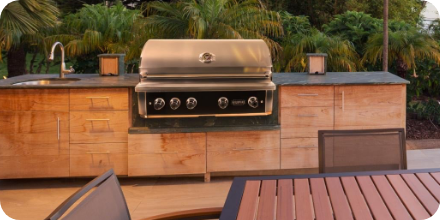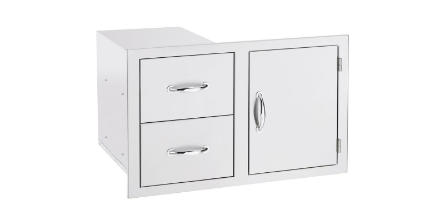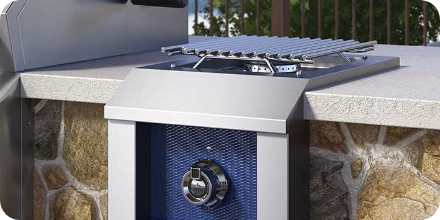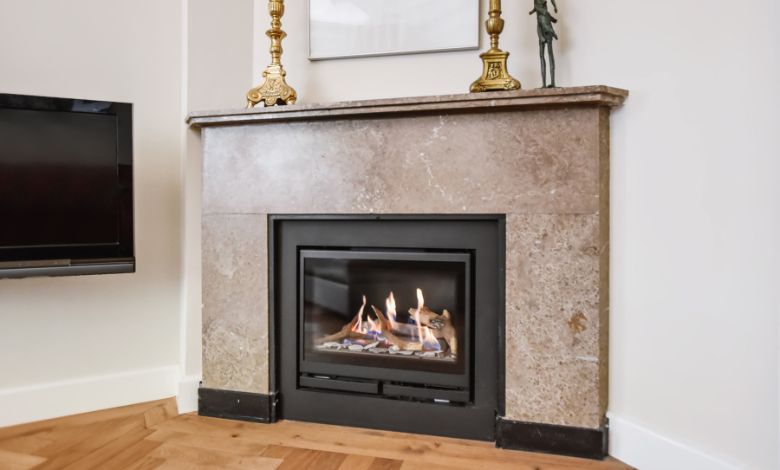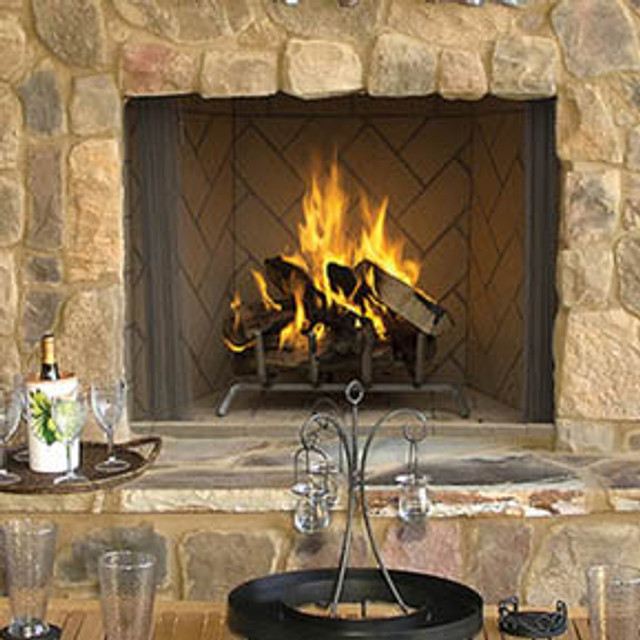Wood Burning Stoves Guide: A Warm Welcome to Cozy Living
Posted by Anna William on Dec 18th 2024
When creating a warm, inviting space that’s both functional and charming, few things beat the allure of a wood-burning stove. There's an enduring comfort in the gentle flicker of a flame, the quiet crackle of logs on fire, and the cozy warmth that envelops the room. Whether considering one for your comfortable cabin, adding ambiance to your family room, or reducing your reliance on central heating, a wood-burning stove is a fantastic investment. Here’s your guide to selecting, installing, and getting the most out of a wood-burning stove for your home. Let’s dive into all you need to know to make it a cozy and efficient addition to your space.
Why Choose a Wood-Burning Stove?
Wood-burning stoves have been around for centuries, offering reliable, efficient heat and a welcoming atmosphere. Here are just a few reasons why they’re still popular today:
- Energy Efficiency: Wood-burning stoves are incredibly efficient, often converting 70-80% of the wood’s energy into heat. This means you get more warmth per log, potentially lowering your heating bills.
- Sustainable Fuel Source: Wood is a renewable resource, and when harvested sustainably, it’s an environmentally friendly way to heat your home. Modern wood stoves are engineered to efficiently combust fuel, reducing emissions.
- Unmatched Ambiance: A wood stove’s warm glow adds a unique charm to any room. It's more than just comfort; it's about the ambiance and the enduring experience it offers.
- Self-Reliance: During power outages, wood-burning stoves keep your home warm and cozy without relying on electricity or gas, making them an ideal choice for those seeking self-sufficiency.
Types of Wood-Burning Stoves: Choosing the Right Style for Your Home
Not all wood stoves are the same! Here’s a quick breakdown of the types of stoves you’ll find, so you can choose one that fits your space and needs.
- Traditional Cast Iron Stoves: Known for their classic look and robust build, cast iron stoves retain and radiate heat even after the fire dies. These are perfect for homes with a vintage or rustic aesthetic.
- Modern Steel Stoves: Sleek and minimalist, steel stoves heat up quickly and work well in contemporary spaces. They’re often compact and efficient, fitting seamlessly into smaller rooms.
- Soapstone Stoves: If you’re looking for lasting heat, soapstone is the way to go. These stoves heat up slowly but retain warmth for hours, radiating gentle heat well after the fire has died down.
- Pellet Stoves: Although technically different from traditional wood-burning stoves, they use compressed wood pellets, making them highly efficient and easy to control. They offer a solution for those seeking a stove that requires refueling less often.
Each type of stove has its unique charm and functionality, so think about your home’s style, the size of the space you want to heat, and your personal preferences when choosing your stove.
Key Factors to Consider When Buying a Wood-Burning Stove
Finding the perfect wood-burning stove involves balancing aesthetics, functionality, and safety. Here’s what to look out for:
- Size & Heat Output: Stoves are evaluated based on heat production, commonly quantified in British Thermal Units (BTUs). As a rule of thumb, a stove with 25,000 to 40,000 BTUs is perfect for a 1,000-square-foot room. Consider the area's dimensions you need to heat and select a stove adequately sized to heat the space efficiently.
- Efficiency: Look for stoves with high efficiency ratings, ideally between 70 and 80%. These stoves produce more heat from each log, saving you money and reducing emissions.
- Material & Design: Different materials offer different heating experiences. Cast iron stoves provide long-lasting warmth, while steel stoves heat up faster. Consider your home’s decor style and select a stove that complements it.
- Certifications: Ensure the stove is EPA-certified. This certification means the stove meets environmental standards for emissions, making it a cleaner, greener choice.
Wood Types: Choosing the Right Fuel for Your Stove
The type of wood you use can significantly impact the efficiency of your stove. Here’s a brief overview:
- Hardwoods (Oak, Maple, Birch): These dense woods burn slowly and produce a lot of heat, making them perfect for keeping your space warm through the night. They’re ideal for long-lasting fires but can be pricier than softer woods.
- Softwoods (Pine, Fir, Cedar): Softwoods burn quickly and are easy to ignite, making them a good choice for starting fires. However, they produce less heat and burn faster, so they’re better suited for quick heating.
- Seasoned Wood: It is crucial to utilize wood that has been adequately aged, typically dried for 6-12 months. Aged timber offers a cleaner burn, generates more warmth, and minimizes creosote accumulation in your chimney.
Installation & Safety Tips: Creating a Safe Space for Your Wood-Burning Stove
Installing a wood-burning stove involves meticulous preparation and strict adherence to safety protocols. Consider the following essential advice:
- Clearances & Positioning: Ensure your stove is installed with sufficient clearance from walls and combustible materials. Most stoves need at least 36 inches of clearance unless you have a heat shield.
- Proper Ventilation: Ensure your stove is equipped with a chimney or flue to effectively expel smoke and gases. Make sure it’s professionally installed and cleaned regularly to prevent creosote buildup.
- Floor Protection: The floor surrounding your stove should be non-combustible. Many use fireproof tiles or a hearth pad to create a safe area around the stove.
- Smoke & Carbon Monoxide Detectors: Since wood stoves produce smoke, it’s vital to have working smoke detectors in the room. Installing a carbon monoxide detector provides added security, particularly in well-sealed and insulated homes.
- Regular Cleaning: Frequently empty the ashtray and ensure your chimney is checked and cleaned annually.
Tips for Efficient & Safe Operation
Once your stove is installed, keeping it efficient and safe comes down to using it properly. Here’s how to get the best performance:
- Build the Fire Right: Start with kindling and smaller logs, allowing the fire to catch before adding larger pieces. This helps create a hotter burn, reducing smoke and increasing heat output.
- Avoid Overloading: While it’s tempting to pile in logs, overloading your stove can reduce efficiency and increase creosote buildup. Aim for a controlled burn, adding wood as needed.
- Use the Air Controls: Your stove will likely have air intake controls. Opening them allows more oxygen in, making the fire hotter. Once the fire is established, partially close them to maintain a consistent burn.
- Monitor Chimney Buildup: Regularly check your chimney for any signs of creosote accumulation. If not addressed, this highly combustible material can lead to chimney fires. To ensure safety, arrange for yearly chimney inspections.
The Benefits of Wood-Burning Stoves for Your Home
A wood-burning stove offers more than mere warmth to your living space; it introduces a variety of advantages:
- Aesthetic Appeal: A beautifully designed stove can become the centerpiece of your room, adding charm and style that’s hard to match.
- Lower Heating Costs: With rising energy costs, utilizing a wood stove can substantially decrease your dependency on central heating systems, which is particularly beneficial if you can access cost-effective wood sources.
- Sustainable Living: For those wanting to live more sustainably, using wood from renewable sources can reduce your carbon footprint.
- Sense of Comfort & Nostalgia: There’s a reason we’re drawn to fire. A wood stove offers a timeless way to relax, unwind, and connect with loved ones around a warm, glowing flame.
Maintenance: Keeping Your Stove in Prime Condition
Your stove needs a bit of love to keep it running efficiently. Routine maintenance helps extend its life and keeps it safe to use. Here’s what to do:
- Empty Ash Regularly: Remove ash when it builds up to about an inch. Too much ash can block air intake, while too little can make it harder to start a fire.
- Check Gaskets & Seals: Door gaskets can wear out over time, causing your stove to lose efficiency. Check and replace them as needed to ensure a tight seal.
- Inspect the Glass: The glass on your stove's door can get sooty. A simple cleaning with vinegar and water can keep it clear, allowing you to enjoy the view of the flames.
- Have a Professional Inspection: At least once a year, have a professional inspect the stove and chimney to ensure there are no hidden issues that could lead to trouble later.
Adding the Final Touches: Make It Yours
A wood stove isn’t just a heating appliance it’s part of your home’s story. Dress it up with a sturdy firewood basket, a cast-iron kettle for humidifying the room, or decorative tools that suit your decor. Small touches, like a comfortable rug in front of the stove, add even more charm and coziness to your wood stove setup.
Wrapping It Up: The Heart of Your Home
There’s no doubt that a wood-burning stove can transform a house into a home. It’s about creating a space to escape from the world, cozy up with a book, and let the warmth fill every corner of your room. When you choose a wood stove, you’re investing in comfort, beauty, and a reliable source of warmth that’ll serve you for years.
At Embers Living, our enthusiasm lies in guiding you to the ideal wood-burning stove. Whether you're a novice or seeking an upgrade, our goal is to ensure your journey is pleasant, secure, and effortless. Here’s to cozy nights and a home that truly feels like yours!












